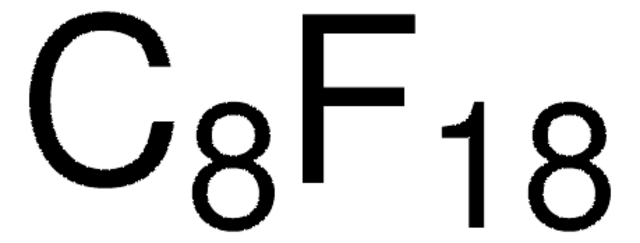406414
Perfluorononane
97%
Sinónimos:
Eicosafluorononane
About This Item
Productos recomendados
Ensayo
97%
Formulario
liquid
índice de refracción
n20/D 1.276 (lit.)
bp
125-126 °C (lit.)
densidad
1.799 g/mL at 25 °C (lit.)
grupo funcional
fluoro
cadena SMILES
FC(F)(F)C(F)(F)C(F)(F)C(F)(F)C(F)(F)C(F)(F)C(F)(F)C(F)(F)C(F)(F)F
InChI
1S/C9F20/c10-1(11,2(12,13)4(16,17)6(20,21)8(24,25)26)3(14,15)5(18,19)7(22,23)9(27,28)29
Clave InChI
UVWPNDVAQBNQBG-UHFFFAOYSA-N
Descripción general
Aplicación
Para utilizar con
Código de clase de almacenamiento
10 - Combustible liquids
Clase de riesgo para el agua (WGK)
WGK 3
Punto de inflamabilidad (°F)
Not applicable
Punto de inflamabilidad (°C)
Not applicable
Equipo de protección personal
Eyeshields, Gloves
Elija entre una de las versiones más recientes:
¿Ya tiene este producto?
Encuentre la documentación para los productos que ha comprado recientemente en la Biblioteca de documentos.
Los clientes también vieron
Active Filters
Nuestro equipo de científicos tiene experiencia en todas las áreas de investigación: Ciencias de la vida, Ciencia de los materiales, Síntesis química, Cromatografía, Analítica y muchas otras.
Póngase en contacto con el Servicio técnico










